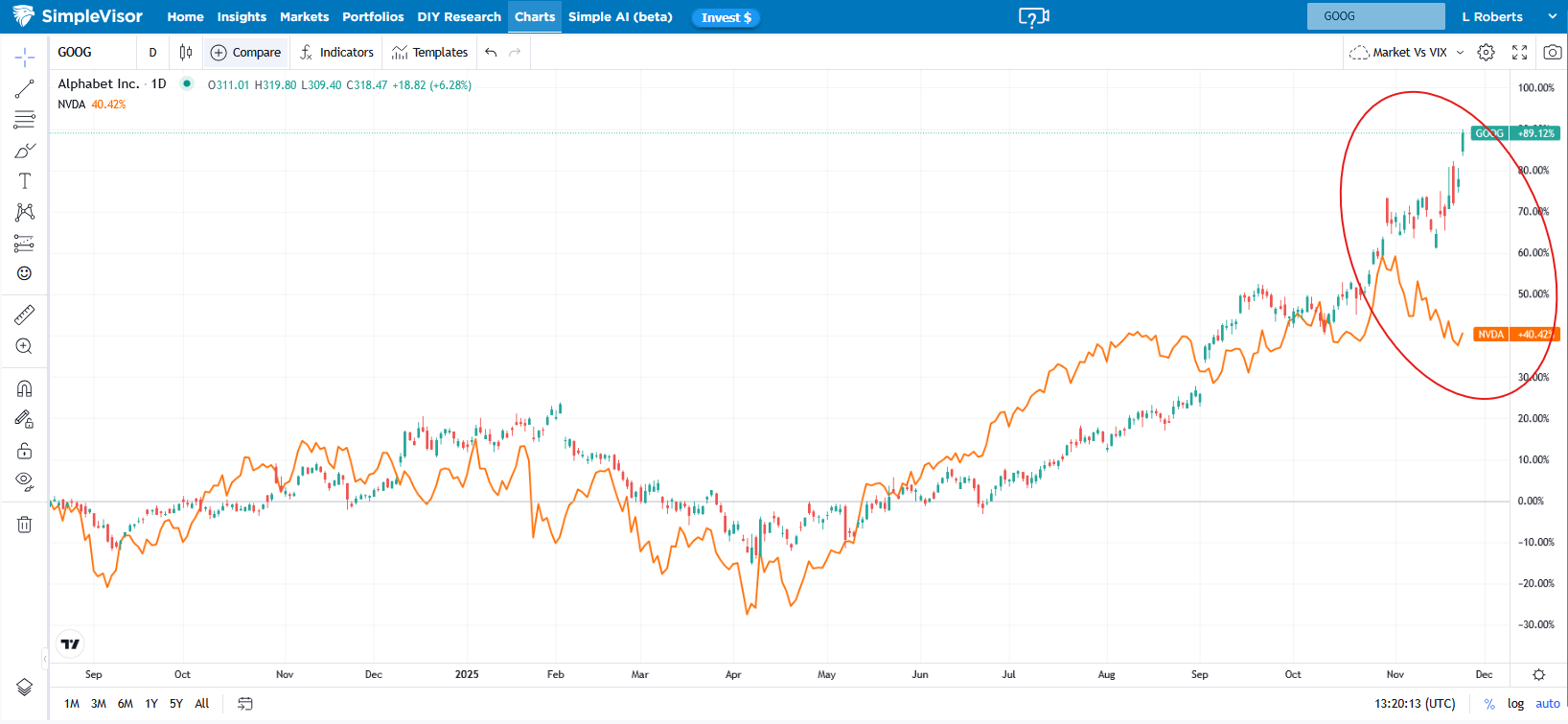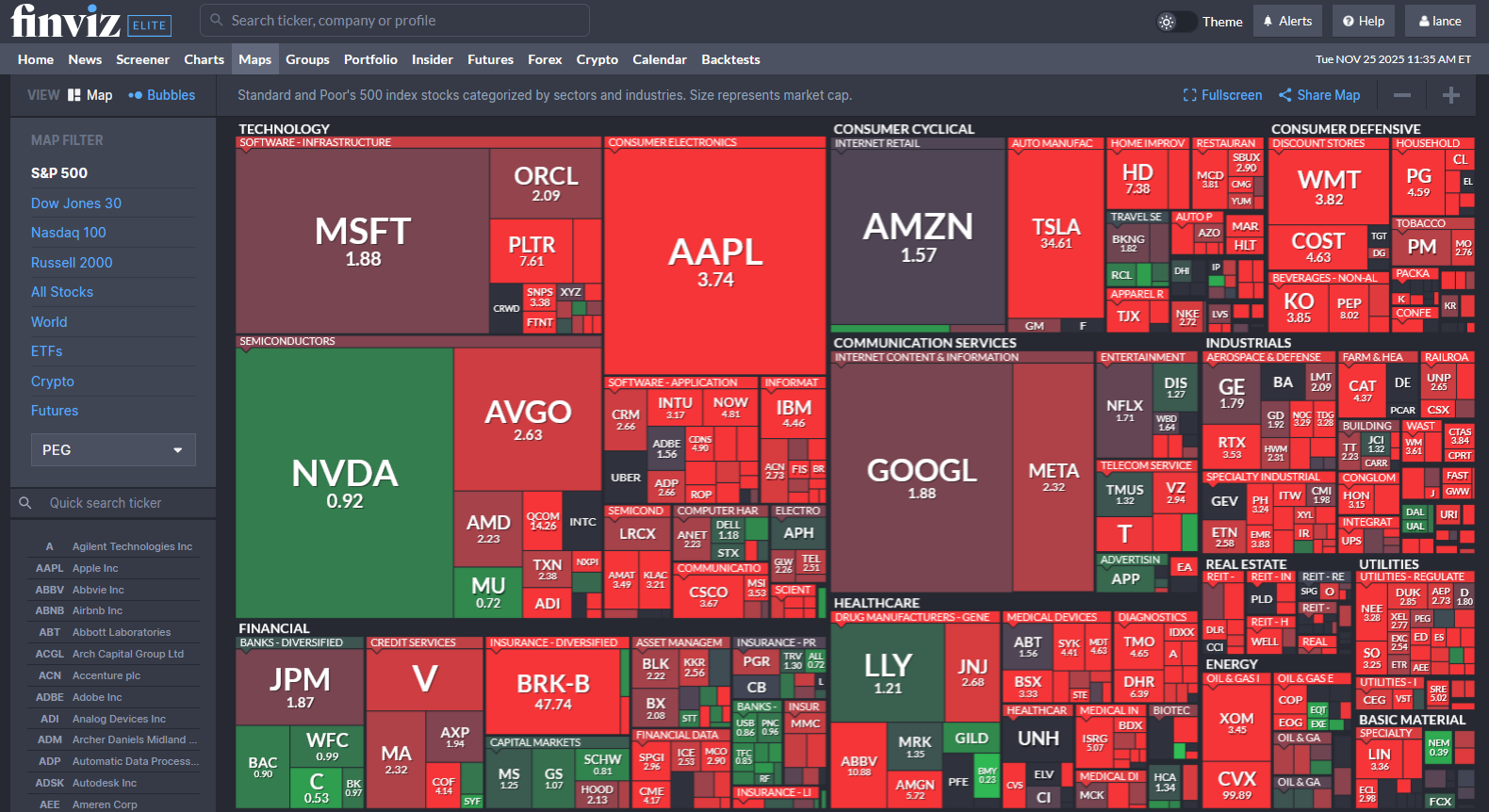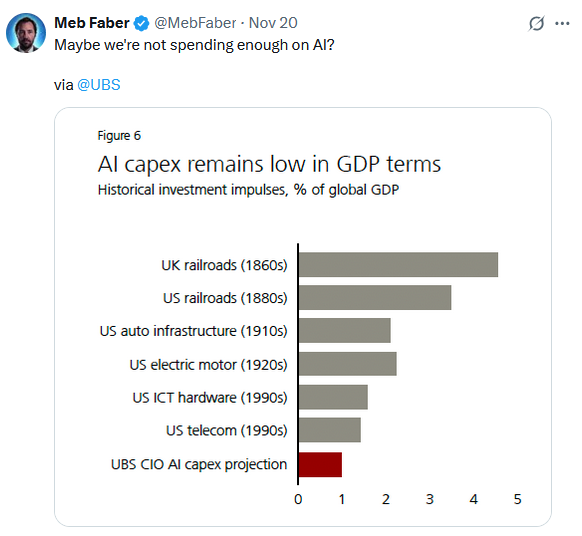S&P 500 could hit 8,000 in 2026 on more easing from Fed: JPMorgan
Markets have priced Nvidia as the clear winner in AI chip production. To some, its moat appears impenetrable. Google’s developments suggest there may be some competition. Google (NASDAQ:GOOGL) has been training and serving its AI platform with in-house tensor processing units (TPUs).
These chips are more cost-effective and power-efficient than Nvidia’s (NASDAQ:NVDA) GPUs. By using TPUs in place of GPUs, Google appears to be improving its unit economics and, at the same time, is lessening its dependence on Nvidia chips.
It’s not just Google developing TPUs. Meta Platforms (NASDAQ:META) has its own chip, MTIA, to handle its Generative AI workloads. Amazon’s (NASDAQ:AMZN) Tranium also performs similar tasks. Given how the stock market has rewarded Google of late, it’s a good bet that efforts to develop further TPUs will intensify.
These new challenges question the assumptions underpinning Nvidia’s premium margins and the “everybody wins” narrative embedded in some Magnificent Seven valuations. To wit, consider the following from John Authers of Bloomberg:
For now, Google’s TPUs remain proprietary. And while Nvidia’s advanced chips are likely to stay in high demand, aiMotive’s Laszlo Kishonti argues that other hyperscalers will be encouraged to develop their own custom silicon, potentially at a fraction of Nvidia’s cost. Google’s chief executive, Sundar Pichai, announced at the recent earnings that TPUs will be made available for sale soon:
We are investing in TPU capacity to meet the tremendous demand we are seeing from customers and partners, and we are excited that Anthropic recently shared plans to access up to 1 million TPUs.
The graph below shows that the market is paying attention to the rise of TPUs and Nvidia’s eroding market share. Bear in mind that Nvidia has proven to be incredibly innovative and cutting-edge, so expect it to offer competing TPU products while maintaining a near-monopoly on its AI GPUs.
Leveling The Valuation Playing Field
We recently discussed the PEG ratio and how it portrays Nvidia as cheap despite its high P/E ratio. We received a few emails asking for more details, so we thought it was worth sharing some math to help you better appreciate valuations. The PEG ratio is the P/E ratio divided by the expected growth rate. Typically, investors use expected EPS growth for the next 3-5 years. To help appreciate the PEG ratio, let’s start with Nvidia.
Nvidia has a P/E ratio of 43 and a PEG ratio of .92. We can back into the expected growth rate by dividing the P/E by the PEG as follows: 43/.92 = 46. The market expects earnings to grow by 46%. To add context, the PEG ratio on the S&P 500 is 1.82, assuming 12% earnings growth.
Verizon (NYSE:VZ) has a very cheap P/E valuation of 8.5. However, its expected growth rate is only 3%, making its PEG ratio close to 3.
Apple (NASDAQ:AAPL) has a similar P/E as Nvidia at 37. Its expected earnings growth rate of 10% is well below Nvidia’s, making its PEG ratio higher than Nvidia’s.
We share these examples to help you appreciate that the P/E ratio is a great valuation measure, but without context for expected growth, it can be very misleading. The FinViz table below shows the PEG ratios for S&P 500 stocks.
Tweet of the Day

